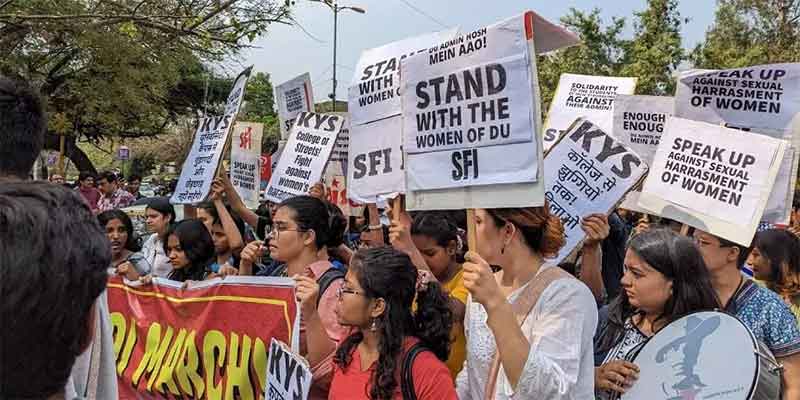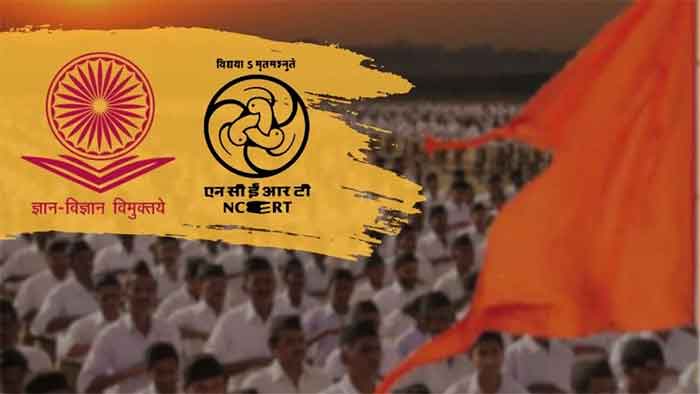
“..I am afraid I have no faith in astrology and certainly I should not like to fix up national programmes in accordance with the dictates of astrologers…”
- Jawaharlal Nehru (In a letter to Rajendra Prasad, who had objected to January 26, 1950 as the date for inaugurating the republic on astrological grounds. Page 77, Volume 2, Jawaharlal Nehru, A Biography, OUP, 1979)
Can schools aided by government funds be opened for religious instruction?
A cursory glance at the constitutional debates makes it abundantly clear that a majority of the members – despite their own religious inclination – were clearly of the opinion that schools, whose basic purpose was supposed to open minds of children and not to make them dumping ground of useless information, should never be opened up for any type of religious instruction. It was clear that they were seeing the perils of poisoning of the minds by religious frenzy in this part of the subcontinent, and were keen that future of independent India could be secured on secular grounds only.
The insertion of article 28 (1) just goes to show the united resolve of our founding fathers which clearly states:
“No religious instruction shall be provided in any educational institution wholly maintained out of State Funds” unless “established under any endowment or trust which requires that religious instruction shall be imparted in such institution”.
In fact, article 28 of the constitution makes it more explicit and does not leave any ambiguity as far its implementation is concerned.
“No person attending any educational institution recognised by the state or receiving aid out of state funds shall be required to take part in any religious instruction that may be imparted in such institution or to attend any religious worship that may be conducted in such institution or in any premises attached thereto unless such person or, if such person is a minor, his guardian has given his consent thereto cultural and educational rights.”
It needs to be underlined that the expression religious instruction here has a restricted meaning. It conveys that teaching of customs, ways of worships, practices or rituals can not be allowed in educational institutions wholly maintained out of State funds.
It is worth considering whether an educational institution could impose its will on the students vis-a-vis religious instruction under the name of moral teaching etc.? Perhaps drafting committee of the constitution was aware of this possibility, and had clearly stated that any such imposition is a breach of article 19 which says, “All citizens shall have the right -(a) to freedom of speech and expression,”; any such imposition is also a breach of article 25(1) which says,
“Subject to public order, morality and health and to the other provisions of this Part, all person are equally entitled to freedom of conscience and the right freely to profess, practise and propagate religion.”
The recent order of the Rajasthan government, where it has instructed that the government schools in the state will hold lectures of “Saints-Mahatmas” on every third Saturday of the month as an extra-curricular activity, seems to overlook these key provisions of the constitution. What is rather disturbing is that it has also not bothered to pay heed to another constitutional provision which includes, under fundamental duties, “To develop the scientific temper, humanism and the spirit of inquiry and reform”. (Sec V, article 51 A on Fundamental Duties), fully knowing that any such sermon by these “Saints-Mahatmas” would be a strong deterrent in development of the scientific temper.
It is an interesting coincidence that this move by the Rajasthan government has come at a time when the apex court of the country has asked the government to clarify its stand on a similar matter. A petition has been filed in the SC by a man based in Jabalpur, Madhya Pradesh, who has claimed that the Hindi prayers sung during the morning prayers in over 1,100 Kendriya Vidyalayas promote a particular religion and hence violate the Constitution. According to the petition, the Hindi prayers that include shlokas like ‘asto ma sadgamaya’ and other prayers promote particular religious beliefs, and thus, parents of students from religious minorities, agnostics etc. might find them “constitutionally impermissible”. The Supreme Court has termed it a ‘serious issue’ and has issued a notice on the same. The response of the government is still awaited.
2.
Anyone who has closely watched the trajectories of the governments led by the BJP at the Centre and different states would not feel surprised over these developments in Rajasthan.
Time and again they have expressed their proximity not only to a particular religion, but have promoted issues, taken up moves, courted controversial sadhus, which has had a serious impact on the secular fabric of the constitution. The public display of religiosity – which was unthinkable or rather muted till a few years ago – by people holding reins of power has become a new norm these days.
Last few months have been a witness to the turmoil caused by the cases involving two high profile sadhus – Ram Rahim and Asaram Bapu – for their involvement in sexual assault of their followers and other black deeds, who were later convicted by the courts. There is enough documentary proof available to show how the saffrons did not shy away from showering their support on the two in the long-winding court battle, clearly with an eye on their mass following.
It was no mere part of human error, rather a reflection of this attitude that a chapter on saints in a Class III textbook taught in Rajasthan schools, featured the rape accused self-styled godman Asaram Bapu as a great saint, more than two years after he was jailed for his act. It was noticed that he was sharing the space in the text book with Vivekananda, Shankaracharya, Mother Teresa and Ramakrishna Paramhans in the book.
Not a long ago, India Today had published a report providing details about the ‘changes’ being undertaken in the field of education:
“Since 1st July 2015, yoga, pranayam, vande mataram, surya namaskar and meditation have been made compulsory at the time of school prayers; Saraswati Puja Worship has been made compulsory on every government and non-government schools on Basant Panchami; a school development committee has been formed in every school and its meeting is compulsory on every Amavasya (no moon day); Bhagwadgeeta has been made part of curriculum; and Geeta and Jail diary of Bhagat Singh have been made mandatory in schools. Books on Integral Humanism and Samajik Samarasta have been made part of school libraries.” (Badalne Lagi Hai Shiksha, ‘India Today’3 rd August 2016, Page 21)
One can see that apart from adding ‘religious tinge’ to the education, efforts are on to popularise ideas/ideologues of the right wing in a subtle manner.
Merely a few months before this order by the Rajasthan government, the MP government led by CM Shiv Raj Singh Chauhan had granted Minister of State (MoS) rank to five religious leaders, namely Baba Narmadanand, Baba Hariharanand, Computer Baba, Bhaiyyu Maharaj, and Pandit Yogendra Mahant in the state Cabinet. It needs be mentioned that Bhaiyyu Maharaj did not accept this proposal, who recently committed suicide because of ‘stress’. It was evident that the immediate trigger to make these appointments was that the likes of Computer Baba had decided to take out ‘Narmada Ghotala (scam) Rath Yatra’, along with Yogendra Mahant, to expose an alleged scam, and to demand action against illegal sand mining – which they promptly dropped after this appointment.
In this era of ‘binary’ politics, it is possible to take out similar examples from the records of any other secular parties and show that what BJP or the governments led by it have been doing is nothing unusual.
Any such claim or understanding which reduces the really ground-breaking developments in Indian politics merely as a ‘political change” would tend to miss the ‘paradigm shift‘ which is occurring (or has occurred) before our own eyes. In fact, in a write-up commenting on Prime Minister Modi’s first Nepal trip (August 2014), the author and well-known journalist Bharat Bhushan had put it rather bluntly: how a conscious attempt is on not only to legitimise ‘Hindu rituals in the public sphere’, but ”create a predominantly Hindutva public sphere that marginalises others”.
In his very first trip to Nepal, Modi had made a personal visit to Pashupatinath Temple, wearing a saffron kurta, saffron shawl and ‘two strings of the holy rudraksha bead’, and had symbolically presented 2,500 kg of yellow sandalwood to the temple authorities. He had performed a Rudra Abhishek – a ritual supposedly performed to please Lord Shiva. The author had raised an important question whether it should have been done as “a representative of a secular republic”, and whether ‘gifts’ worth more than Rs 4 crore perhaps given from the funds from public exchequer should have “been linked with Modi’s personal visit to the temple?”
This is in contrast of the stand taken by the newly independent Indian state on the proposal for renovation of the Somnath Temple. When Sardar Patel and K M Munshi went to Mahatma Gandhi with the project, he blessed the idea but told them that people should contribute for the renovation and not the state. Jawaharlal Nehru distanced himself from the project. He reprimanded Munshi for writing to the Indian Embassy in Peking asking it to “send waters from the Hoang Ho, the Yangtse and the Pearl rivers, and also some twigs from the Tien Shan mountains” for the reconstruction of Somnath.
There are innumerable other examples which show the conscious manner in which the leaders of the nascent republic took steps so that the state does not appear favourably disposed towards a particular religion, and to maintain separation between religion and state.
We should never forget that founders of Constitution decided to move ahead on these lines in an atmosphere which had seen enough communal bloodletting and killing of innocents. Despite the challenges involved in the process, they resolved that if we do not ensure separation of religion and politics, similar bloodletting may occur again. The principled stand taken by Gandhi and Nehru on maintaining the separation, vis-a-vis Somnath Temple was merely a reflection of this greater concern.
3.
Would it be possible for all those concerned citizens – who still believe in secular principles and values, and who are worried about the growing ‘Hindutvaisation of the public sphere’ – to regain initiative so that unsurmountable obstacles on the long journey towards secularisation of society could be removed? This effectively means removal/exit of the ‘sacred’ from the functioning of state and society and its reconstitution on secular foundations.
As of now, the battle looks difficult, but perhaps a beginning has to be made somewhere, lest the situation goes from bad to worse.
Thus, while one strategises to challenge this move by the Rajasthan government – which clearly infringes on the constitutional principles and would act as an instrument to further close minds of the young students – one should not shy away from forming broadest possible alliance to do it. It is high time also to look inward, introspect the whole idea of secularism and introspect why there is a lack of social foundation for secularism in this country. During any conflict situation involving different communities, it becomes more evident. Question arises why more than 70 years after we embarked on a secular path, it has remained so weak.
Perhaps it needs to be mentioned that there is still confusion or lack of consensus within the broader secular movement about what constitutes ‘secularism’. Should we see it as ‘Sarv dharm sambhav (equality for all religions)’ as popularised by Gandhi and his band of seculars, or should we look at it as ‘separation of religion and politics? In fact, this confusion exists within the left also. Absence of clarity gets reflected in the strange formulation one witnessed after demolition of Babri mosque when a section of mainstream left tried to ‘appropriate Rama in its own way’ by dividing Ram into ‘real Ram’ and ‘phoney Ram’.
For various reasons, serious thought could not be given to the whole process of secularisation also (‘a process by which sectors of society and culture are removed from the domination of religious institutions and symbols’ – Peter Berger) in a country like India, and we remained focussed on maintaining or strengthening secularity of the state in a society which was not secular, but was based on exclusions of various kinds – may it be based on caste, gender, ethnicities etc. It is possible that most of us broadly concurred with the prevalent understanding then made much popular by the scholars like Peter Berger (The Sacred Canopy, 1967) which argued that the decline of religion was inevitable in modern industrialising society. It can be mentioned how this understanding flows out of what Meera Nanda calls
“[e]nlightenment project which believed that as men and women begin to understand the underlying order of nature without involving God, they will learn to outgrow their faith in God” (Page178, The God Market).
One knows that the Indian constitution is based on this classical view of secularisation.
Our confidence in the rationalisation of work process, removing all scope of divine intervention or magical action or the unfolding reality of ‘emancipation of the state from the sway of religious rationales for economic activity, law and politics which is universal characteristics of all modernising states’(Nanda, Page 179) led us to a situation where whole world of culture and society was left the field open to various status quoist, reactionary interventions – may it be from the religious formations or from the likes of RSS or Jamaat which further helped desecularisation of the society. It was a manifestation of the situation within the society where one witnesses emphasis of the progressive/transformative movements on political-economic struggles and their neglect of intervention in social-cultural arena.
Another limitation is that secularism was envisaged broadly in terms of an extension of anti-communal struggle which left many a ‘fraternal’ struggles outside its purview. If secularism could be broadly construed (to quote Charles Taylor) as ‘emptying of religion from autonomous social spaces’, movements whose direct or indirect impact was on similar lines, were never considered as an essential part of the movement. For example, anti-caste or Dalit movement, movement against patriarchy and gender-based oppression, people’s science movement, rationalist movement or movement of the exploited and oppressed for dignity and rights definitely bear the potential of limiting the role of religion in statecraft as well as society. But, there was no attempt to broaden the constituency of ‘secular movement’ or integrate them in a larger framework.
There could be many such points and the conversation should continue with a hope expressed in the Sanskrit couplet ‘Wade Wade Jayate Tatvabodhah‘ (Let us reach a sense of the world by this debate).
Subhash Gatade is the author of Pahad Se Uncha Aadmi (2010) Godse’s Children: Hindutva Terror in India,(2011) and The Saffron Condition: The Politics of Repression and Exclusion in Neoliberal India(2011). He is also the Convener of New Socialist Initiative (NSI) Email : [email protected]
















































